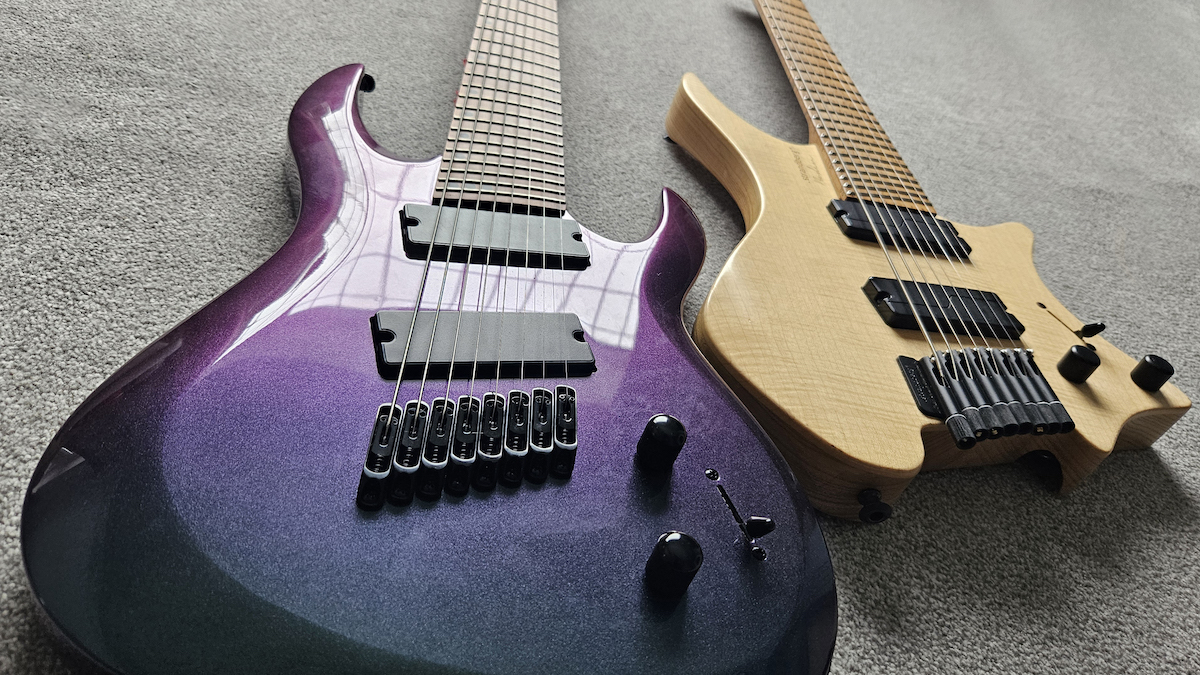
The gear market has a habit of catching up with itself, and in recent years manufacturers have assisted players craving a taste of digital modeling and extended-range guitars for much less. It’s a great time for players on a budget – and this got me thinking.
Outside of contributing to Guitar World, I play in a modern progressive metal band called Prognosis, and my current live rig – featuring an eight-string Strandberg Boden and a Kemper – is archetypal of the genre. It cost me approximately $5,000 and it delivers everything I need.
Incredibly though, after some internet sleuthing, I’ve discovered that it’s possible to mirror my rig for much less than 10% of the expenditure, via Harley Benton’s R-458BK multi-scale guitar (currently $175) and DNAfx GiT floor modeler ($119). That’s $294 for the pair and 5.8% of the price of my top-end setup.
So, does the gulf in price represent a gulf in class or can this budget rig go toe-to-toe with my high-end gig rig? I took them both for a spin, side-by-side, to find out. I've included some audio recordings below too, so you can hear for yourself.
At a glance
Having employed a more traditional setup for years, I modernized my rig in 2021. That’s why the futuristic-looking Strandberg, and the Kemper, which allows me to make sweeping tonal changes at the press of a button, became my weapons of choice.
The rival rig, then, had to share spec commonalities if it was going to be a fair fight. Harley Benton has rightfully forged a reputation as the budget gear kings and their offerings – the guitar’s roasted maple flourishes and the modeler’s impressive specs – seemed the ideal challengers.
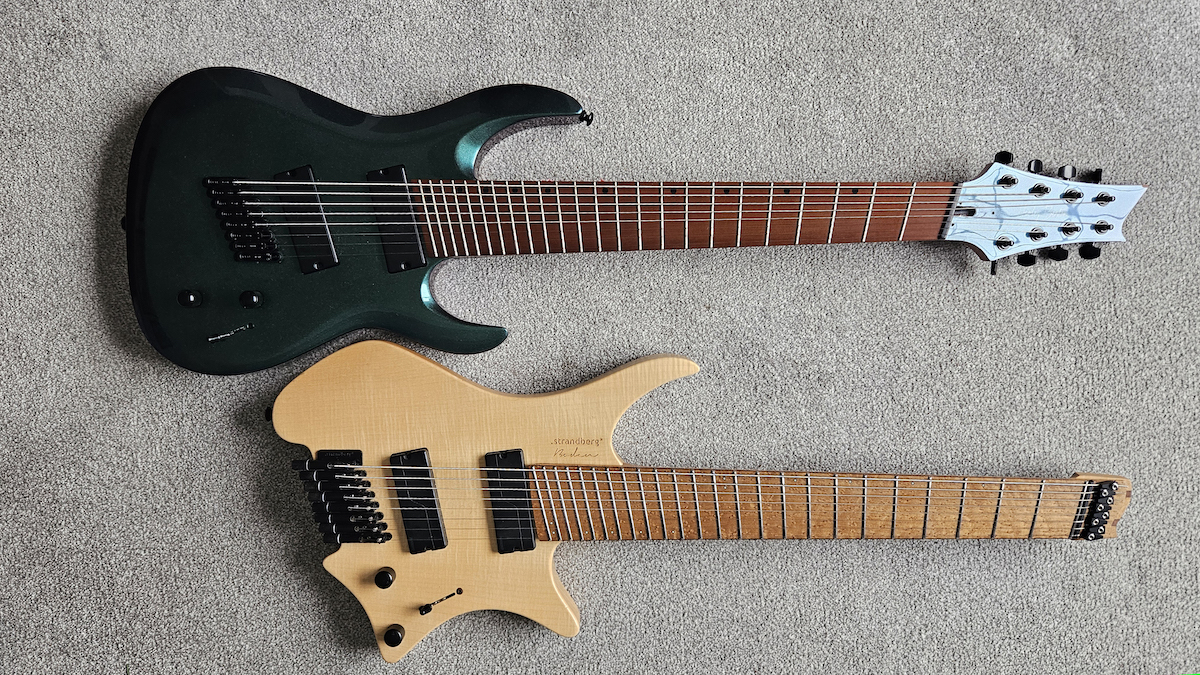
The guitars
Strandberg Boden
- Swamp ash body with flame maple top
- Bolt-on flamed maple EndurNeck
- Birdseye maple fretboard (24 frets)
- 26.5" - 28" scale length
- Fishman Fluence Modern humbuckers (active)
- Current price: $2,495 at Guitar Center
Harley Benton R-458BK
- Poplar body
- Bolt-on roasted maple speed-D neck
- Roasted maple fretboard (24 frets)
- 25.5" - 27.2" scale length
- Harley Benton Hi-Gain humbuckers (passive)
- Current price: $175 at Thomann
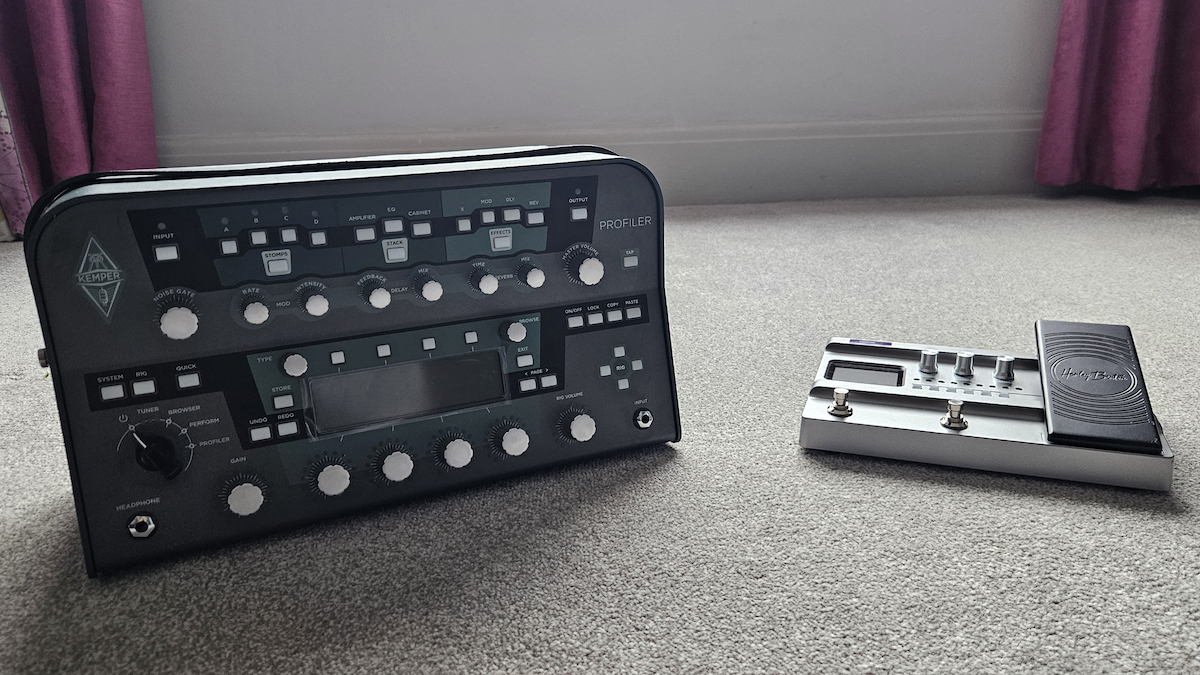
The modelers
Kemper Profiling Powered Head & Footswitch
- 200 amp profiles & cabs
- 72 effects
- 125 preset banks of 5x rigs
- Amp profiling
- Current price: $2,849 at Guitar Center
Harley Benton DNAfx GiT
- 55 guitar amps
- 151 effects (including overdrive, delay, reverb, noise gates, compressors)
- 200 preset slots
- Integrated expression pedal
- Current price: $119 at Thomann
Build quality
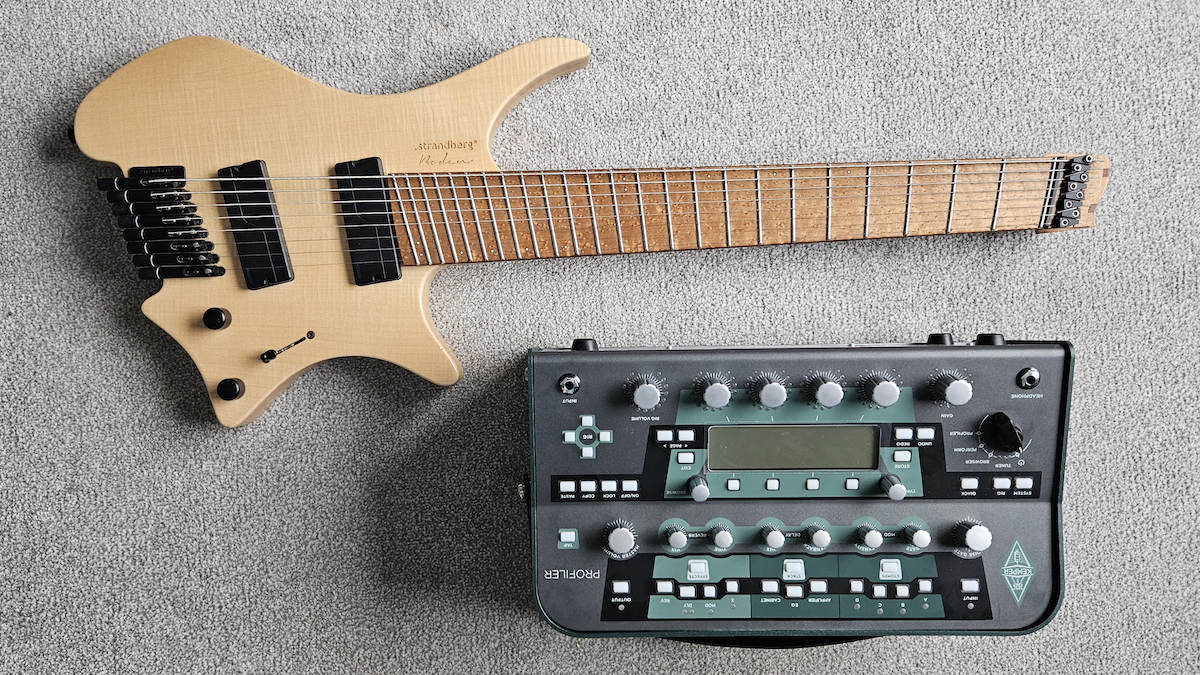
For the uninitiated, Strandberg designs are dictated by ergonomics, from the way it sits on your lap to how it feels in your hands. Many will scoff at the angular EndurNeck, but once you play it, it makes complete sense. Take it from me, it plays like a dream.
The Harley Benton looks great, it’s (generally) effortless to play and the quality of the hardware, while not blowing me away, certainly surpassed my expectations considering the price tag.
Unfortunately, I found a bridge issue to be suffocating the high E and B strings. Changing the pickup height and adjusting the truss rod provided no solution, meaning it is likely a bridge/saddle or fret issue. It’s no doubt an easy fix for a trained luthier, but evidence that the HB production line is far from perfect. That said, with prices as low as this, it would be foolish to expect total perfection.
Like the roasted maple flourishes, its iridescent colorway, which morphs from a steely grey to a rich green in certain lights, feels premium. However, I have unknowingly managed to chip the headstock, suggesting it isn’t the most rugged of finishes.
Workflow
With Kemper presets coming in banks of five, I can tailor each bank to a specific song and the mix of tones I need for them. It’s primed for live performances.
The Harley Benton DNAfx has two footswitches for moving up and down one massive bank of 200 presets. To replicate that same benefit, I invested a lot of time anally ordering my patches to mirror the flow of my band’s set, which meant duplicating rhythm tones on either side of a solo patch, and so on.
It takes time, but it works, albeit at a small cost; unlike the Kemper, there doesn’t seem to be a way of moving preset slots. Rather, you have to copy and paste, thus overwriting what was there. If your early presets are ones you’ve dialed in and enjoy, you’ll need to move them further down the pecking order to avoid overwriting them, or save them as external presets on the app, before mapping for a gig.
Dialing in tones via the modeler alone is a fiddly and frustrating endeavor, especially compared to Kemper’s intuitive as-many-dials-as-the-Millennium-Flacon interface. In the DNAfx’s defense, the accompanying desktop app performs far better than it looks. It’s a case of doing your homework before and after playing sessions or having your laptop handy.
Tones
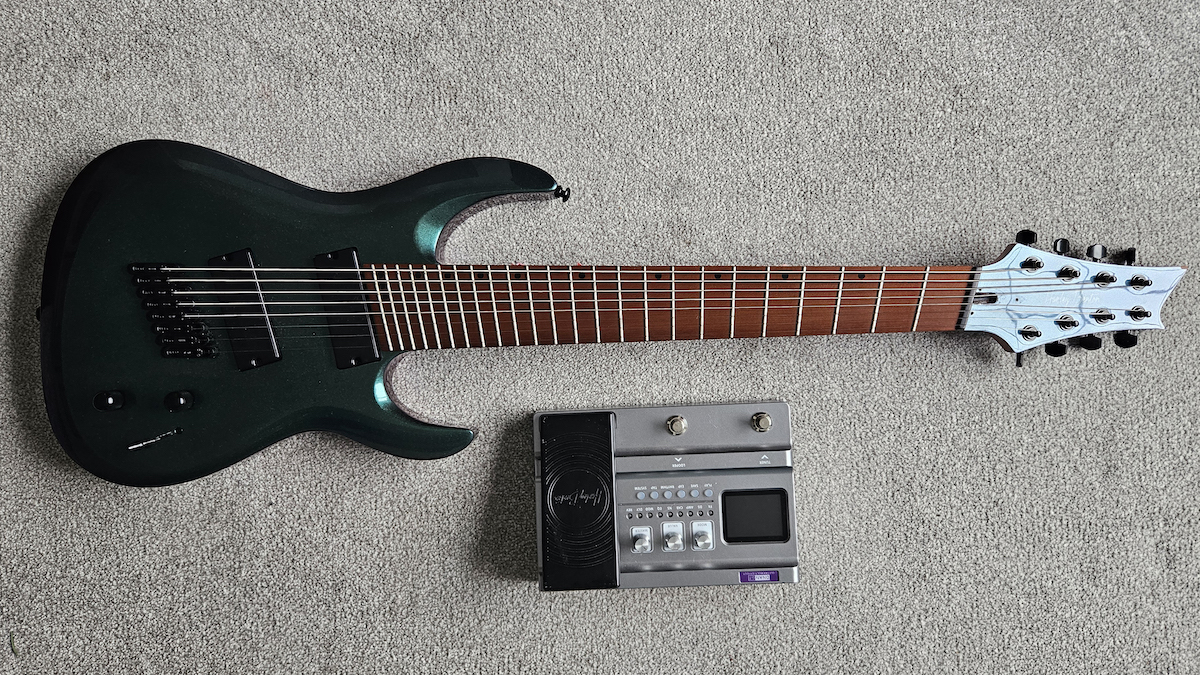
Kemper amps seem fairly well-tuned as standard, with only minor tweaks tending to be needed, but with the DNAfx, there’s a real value in comparing cabs, tube emulations, compressors, and overdrives to find the best results, especially when so many out-the-box amps have a real sinewy and cheap quality to them. The fact that third-party IRs can be loaded may help drag some of these amps out of the mire.
In the band room, I was impressed by how the DNAfx stood up against my bandmate’s Ibanez RGDMS8 RG and Kemper. I was expecting to be vastly out-muscled, but it stood its ground. The Kemper tones are better in quality; they sound far more authentic and have greater versatility, but after a bit of maneuvering, it wasn’t the walkover I feared.
Feel & quality
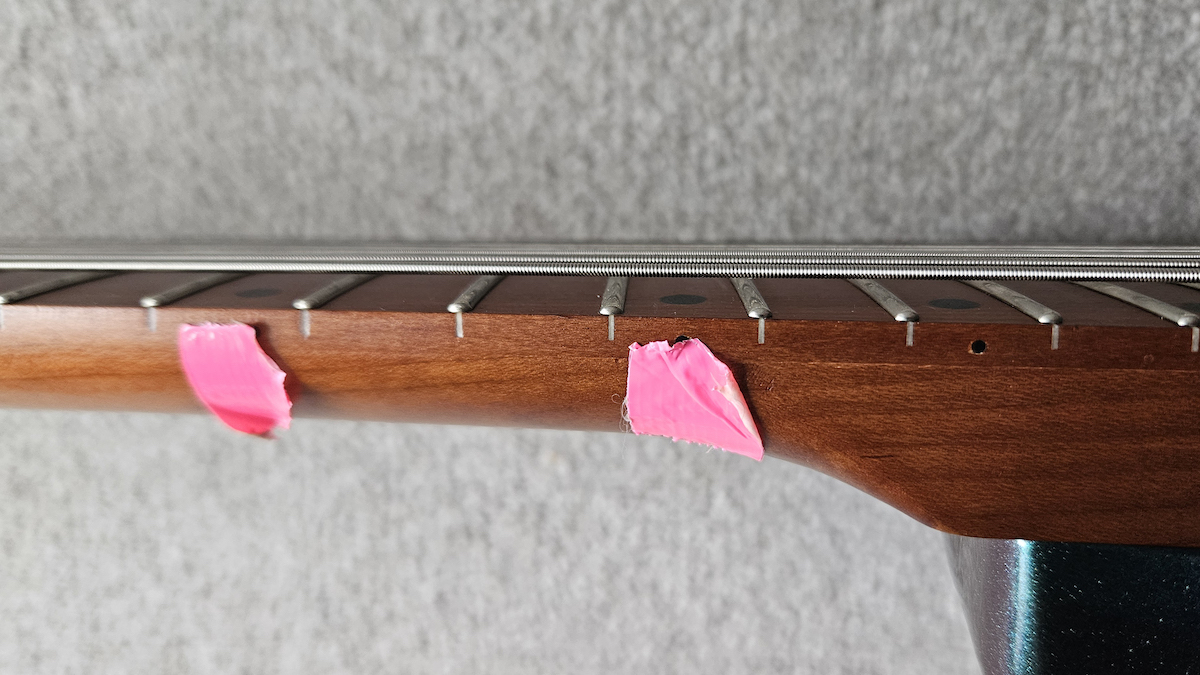
I found the HB’s Speed-D neck to be fairly effortless to play. There was an instant chemistry, the slanted frets felt familiar and its general playability isn’t to be sniffed at. That is, until it comes to soloing. The neck starts to get pretty bulky beyond the 15th fret, expanding as I got toward the neck joint, which takes away from the soloing experience. You have to work for it.
There’s another drawback. The roasted maple neck and ‘board feels deceptively luxurious – like getting a spa day on the cheap – but its black inlays blend into it. Navigating the fretboard in anything other than very bright environments is extremely difficult. I’ve used pink tape as a temporary makeshift solution to a less than practical design choice, but it’s not ideal.
Luminlays on such a cheap guitar is asking a lot, but white inlays would make a huge difference. And with its price likely attracting beginner players, hard-to-see inlays will likely impede player confidence.
Audio demos
I’ve recorded both rigs so you can get a vibe for how they sound:
A mini demo of the budget rig
Featuring cleans, rhythms, and leads - A Fender Twin, Engl E645, EVH 5150.
A mini demo of the expensive rig
Featuring the same amp combos.
Isolated riff
Those same rhythm channels played one after the other, so HB Engl, HB 5150, Kemper Engl, Kemper 5150.
An Opeth-y lead
Played on both rigs. Marshall Plexi 100 with chorus, reverb, and delay
A crunchy riff
Played on both rigs. Using the clean channel on a SLO100 with OD pedals
Verdict
The budget rig was destined to lose here, but that isn’t the takeaway. It isn’t a million miles behind, and it shows that there are still decent options without selling a kidney to afford them.
The R-458BK has its pitfalls, but I see a lot of potential in it. Sinking circa $150 to pimp the pickups and have it properly set up and I’m confident it would outperform many like-for-likes under $500. Since having it in my arsenal, I’ve honestly been more willing to pick it up than guitars that cost twice as much.
High-end gear is high-end for a reason, but Harley Benton is proving that there are gems to be found at the lower end of the scale that even the most snobbish of cork-sniffers would be silly not to explore.







